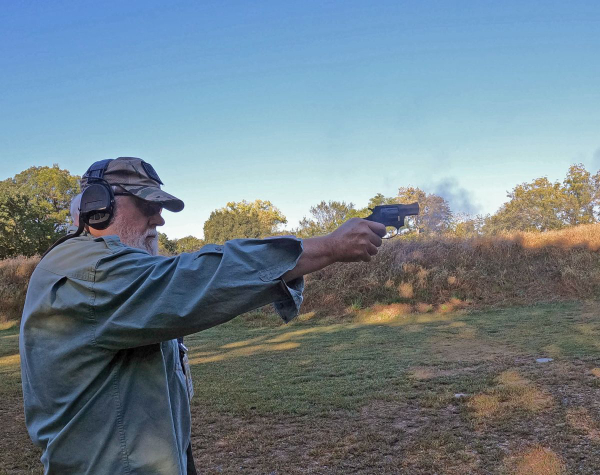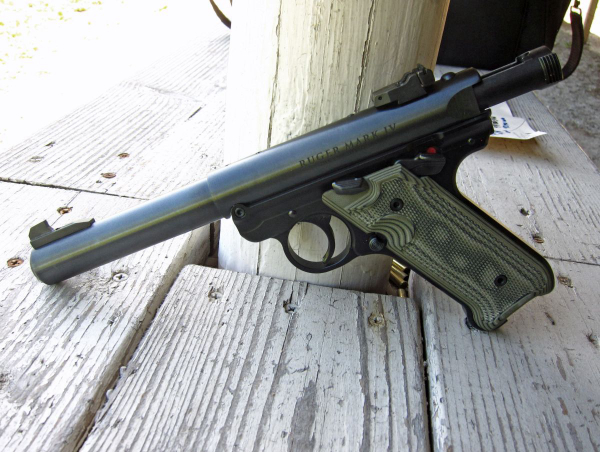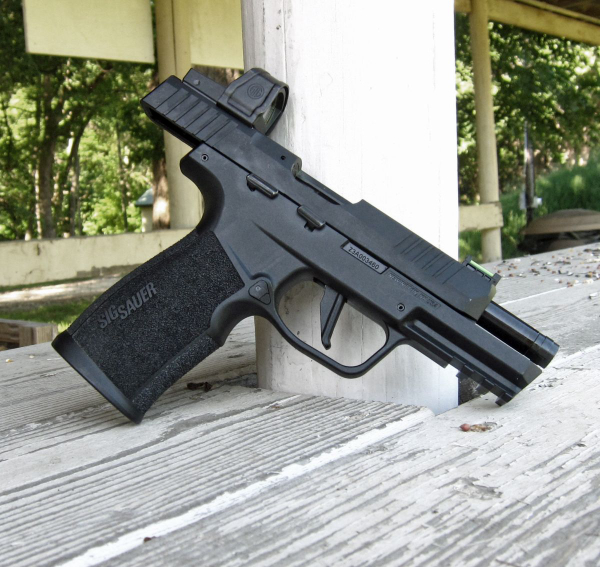
This old shooting game – like lever guns, revolvers and other anachronisms – seems to be enjoying a resurgence, mild though it may be. Spread (like most things) over social contact via the internet, people who are new to shooting seem to be looking to bullseye shooting as a baseline.
And they couldn’t be more right when it comes to handguns. Shooting the old bullseye courses are exercises in determination, concentration, and devotion to accuracy. Chasing that ‘hundred’ and driving up that “X” count takes more drive than many think is worth it. There’s still a relevance to bullseye for those who are currently shooters and to develop those who seek to become shooters.
You don’t have the running, jumping, whooping and hollering of the ‘action pistol’ sports – and you don’t have a whole enormous cardboard target as a mark. You have an “X” ring the size of a nickel that you’re pursuing. That ain’t easy.
Who started the move that led to pistol bullseye courses being shot more now? Skillful folks from “the unit,” special operations types. Using standard targets – of which they doubtless had many, probably with their own NSN (national stock number) – they could judge the relative skills of potential members nearly anywhere.
The idea of standardized courses of fire were a military construct in those pre-communications days when the telegraph was the fresh new thing. Having targets of fixed dimensions and courses of fire that could be measured for distance and using the old stopwatch for time allowed military commanders around the country to determine where their own troops stood in terms of shooting skills.
It doesn’t measure fighting – except that the struggle to keep that gun still and hit a fine mark is hard work. That’s not nothing. Competition followed in the natural way of things.
Social media tells me that the bullseye sports are getting more attention. I was looking at some of the content from “JaredAF” on YouTube, among others. From that youngster, a couple of things stood out.
One was “Know when not to take a shot.” When the course of fire is “ten rounds in ten minutes,” you have time to relax between shots. Trying to “score the target” from a distance – if you have a spotting scope – is possible, but, if the gun is zeroed to the load, not always helpful. Best to stay “in the moment.”
But holding that arm up until exhaustion is reached – you are shooting it one-handed, right? – is not conducive to the best results. So, if it’s not right, put your finger straight on the frame or in high register, then lower the piece to rest on the bench/table. Breathe. Consider the mission. Then try again.
It’s all about the points on the target. You’re starting from zero. Missing the scoring rings doesn’t help that.
Another thing he said, learned from someone else, is a lesson we all need from time to time: “Sight alignment is more important than sight picture.” This is a good lesson for any firearms endeavor.


Having those “open” sights in their proper relative relationship while they “wobble” in and out over the target area as you put constant, consistent pressure on the trigger is far better than the “it looks good …. NOW! - as you slam on the trigger” technique. I had to learn this one through bitter experience.
With optics, as George Harris notes, “float the dot and shoot the shot.” I’m doing the same thing with irons, but my focus is more on the sights (favoring the front) and letting the target blur.
I had time for a short range trip last week and took two pistols – the Ruger Mark IV Target (5 ½” bull barrel, factory sights and trigger) and the SIG Sauer P322 with their ROMEOZero-ELITE optic. The ammo was not target match grade ammo, in spite of the name. It’s bulk packed Federal AutoMatch 40 grain.
I used the original old bullseye range at the club and posted a pair of B-8(CP) (repair centers). For shooting slowfire at 25 yards, those are large bullseye targets. I note, gratefully, that CMP’s “Camp Perry Course” allows B-8s for slow fire at 25 yards – though the scores can’t be used for purposes of classification.
I change up by shooting the first string with my right – dominant – hand, unsupported. I allow no two-handed shooting when working this kind of practice. The second slow fire string is shot left-handed. That’s partly for diagnostic reasons and partly as good practice. I can run the gun reflexively on the right side; I have to think about what I’m doing when I’m shooting with the left hand. It’s a good way to go back to being a student again.
With the iron sights on the Ruger (and its more familiar trigger), I shot only a 40/50 right-handed – and cleared to go score the target. I mark the hits between strings so I know how I’m doing with each hand. The left-handed score was 46/50 – paying attention really helps. The total was an amateurish 86/100. It was the first one-handed precision shooting I’d done in some months.
So I’m happy to have it. Shot cold with no live fire at all for several weeks, I’m gratified to see that I didn’t miss the repair center … this time.
With the P322, I shot over the target with the first string. That’s a good way to confirm the zero on the piece. After a bit of target marking and bringing the dot and the ammo in line, I shot a 45/50 strong-hand only and a 42/50 with the left hand. The 87/100 wasn’t much better and I noted the pronounced push to the right on the left-handed string; that’s a grip issue and one of the best ways I know to find and sort out a shooting error.
On top of being focused practice dedicated to precision, it’s unhurried and allows me time to enjoy the experience. For spectators, it’s like watching grass grow.
For the shooter, it’s being wrapped up in the mechanics of shooting.
Take some time to have a good time. I hope to write more about how to break into bullseye – and how to simply use it to improve your performance in other shooting venues.
See you at the range.
— Rich Grassi
National Programs (Check with local/nearby ranges for leagues, and for state or local organizations)
https://thecmp.org/competitions/cmp-pistol-program/
https://competitions.nra.org/competitions/nra-national-matches/